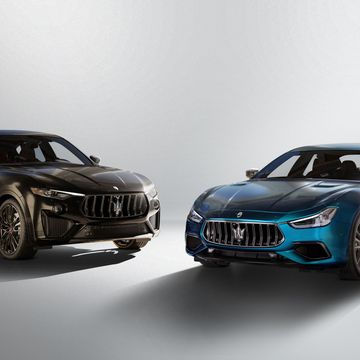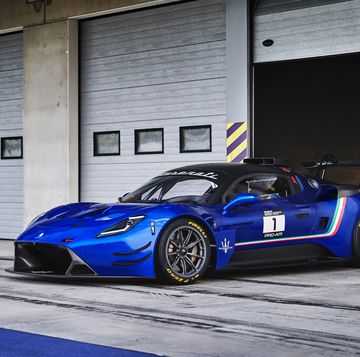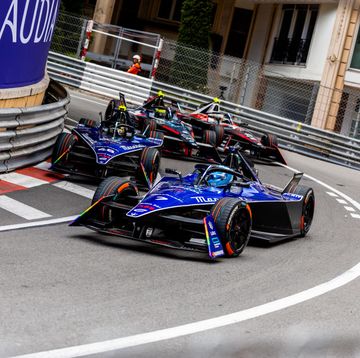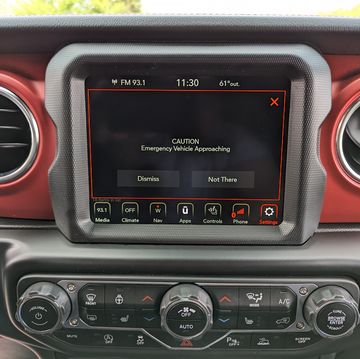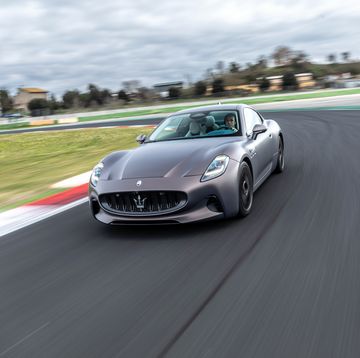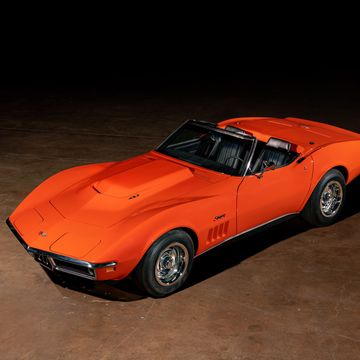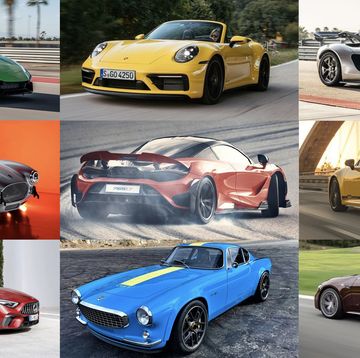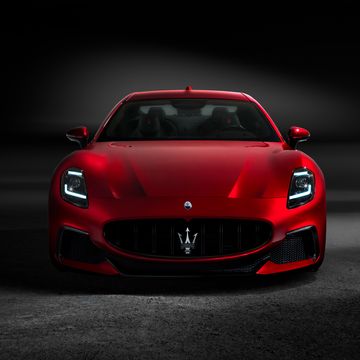- The Maserati MC20 Cielo is a gorgeous roadster version of the MC20 Coupe with a trick electrically operated folding glass hardtop.
- Maserati says the Cielo weighs just 143 pounds more than the coupe.
- Customer deliveries will start Q3 next year, with prices likely pushing $250,000.
The Maserati MC20 Cielo is another of what we should probably call “last hurrah” cars. It comes from an increasingly familiar playbook—an automaker announces its commitment to a fully electric future, and then goes out and creates the loudest, punchiest, and most exciting combustion model it possibly can. Qualities that the MC20 Cielo pretty much exemplifies.
We already know that Maserati’s MC20 sportscar will gain a fully electric derivative later in its lifespan, with the Folgore promising to use a high-tech triple-motor system and offering a level of performance well in excess of that from the versions powered by the company’s Nettuno V6. But there is no chance the e-MC will get anywhere close to this one on noise or charisma. Frankly, it couldn’t—the Nettuno takes both qualities off the dial. That was true for the MC20 Coupe, and is even truer for the new open-topped Cielo version that Autoweek recently got to drive in Sicily.
The differences between both MC20 variants are both limited and obvious. The Cielo’s has a glass hardtop which can fold away beneath the rear clamshell, an electrically powered process that takes just 12 seconds and which can be carried out at speeds up to 30 mph. The roof and its mechanism add 143 pounds over the MC20 Coupe on Maserati’s numbers, but as both cars use the same carbon-fiber tub, the roadster’s torsional rigidity is undiminished.
The Cielo looks as handsome as the coupe with the roof up, the biggest difference being its lack of a glass cover over the rear-mounted engine, and with the top lowered the Cielo crosses the line into outright gorgeousness. This is a spectacularly good-looking car.
Although the roof operates quickly and without drama, ordering it up or down is more trouble thanks to the need to do so through the touchscreen interface. Maserati engineers say that reprogramming the UI to allow this to happen actually cost more money than simply fitting a conventional switch, making it an even stranger decision not to opt for a physical control given the awkward need to maintain pressure on the activation panel throughout the cycle—something I found impossible to do without taking eyes off the road.
Electrically dimming the glass roof’s glass panel also only brings a slight difference to the amount of light getting through. The Cielo’s practicality is also as limited as that of the coupe, with awkward access through the narrow aperture of the gullwing opening door when the roof is raised. Luggage space could be politely described as bijou; there is a 3.5 cu-ft compartment behind the engine, and an even dinkier 0.5 cu-ft one under the hood.
Which concludes the substantive criticism, because pretty much everything else about the MC20 Cielo is excellent. The Nettuno V6 is both the starring and defining feature. This manages the unlikely combination of having just under three liters of swept capacity while achieving a 621 hp peak output. That is the result of both an innovative motorsport-inspired pre-ignition system and also the huge boost pressures being provided by two turbos, these delivering peaks of up to 43.5 psi.
If you’re thinking that sounds like a recipe for lag, then you’re entirely right: With the digital tacho showing anything less than 3000 rpm, responses are lazy and there is a distinct pause as the turbos spool. But the engine also possesses huge character thanks to its rushing induction noise and wastegate hiss every time the gas is eased. All this is present in the MC20 Coupe, but feels rawer and more exciting in the Cielo with the roof lowered.
Fully unleashed, the Cielo’s rear Bridgestone S007 tires often struggle to find off-the-line traction on Sicily’s frequently broken asphalt, but once rolling and with the turbos in their boost zone it feels relentless. On paper it is indeed slower than open-topped supercars like the McLaren 720S and Ferrari F8 Spiders; subjectively it feels even more thrilling than either of those high-bred alternatives.
Yet despite the performance, the Cielo isn’t harsh. Like the coupe there are three dynamic modes, GT, Sport, and Corsa, with each of these delivering substantially different driving experiences. GT is very languid, with the adaptive dampers being pretty much pillow soft by sportscar standards and the standard eight-speed twin-clutch transmission shifting ratios with the gentleness of a torque converter. Sport firms up the chassis nicely and takes the elastic from the throttle pedal and adds more snap to the gear change. The most aggressive Corsa mode—as in “track”—did indeed feel too much for Sicily’s scarred asphalt, but the ability to toggle the dampers to their softer setting allowed the chance to still enjoy the punchiest engine mode and neck-nodding torque bumps to every gearbox upshift.
Regardless of dynamic mode, the Cielo’s steering is fast geared and delivers keen front end responses. Lateral grip is huge but, like its coupe sister, this MC20 happy to tweak and trim its cornering line in response to small throttle inputs. In tighter turns the rear axle can be pushed to the edge of breakaway, even slightly beyond it, without the MC20 turning snappy or feeling ill-tempered. But the overwhelming impression is one of high-speed stability, the Cielo happy to cruise at the sort of velocities that can only be legally experienced on the German Autobahn. The cabin feels surprisingly snug and well insulated with the roof raised, too.
Maserati admits that the Cielo is likely to make up half of MC20 sales, leaving me wondering what reason the other half of potential customers might have for sticking with the coupe. Yes, a fixed roof is a purer choice for a sports car, but beyond the slight increase in mass the Cielo doesn’t seem to lose anything compared to the coupe—well, apart from the predictable need to dig deeper. Pricing for the Cielo hasn’t been confirmed, but we can safely predict that Maserati will extract a substantial premium over the $217,000 being asked for the coupe. If you’ve got the money then, given free choice, you’d almost certainly choose to pay it.
Share your thoughts on Maserati, supercars, open-air driving, and how you feel about roadsters vs. coupes in the comments below.





